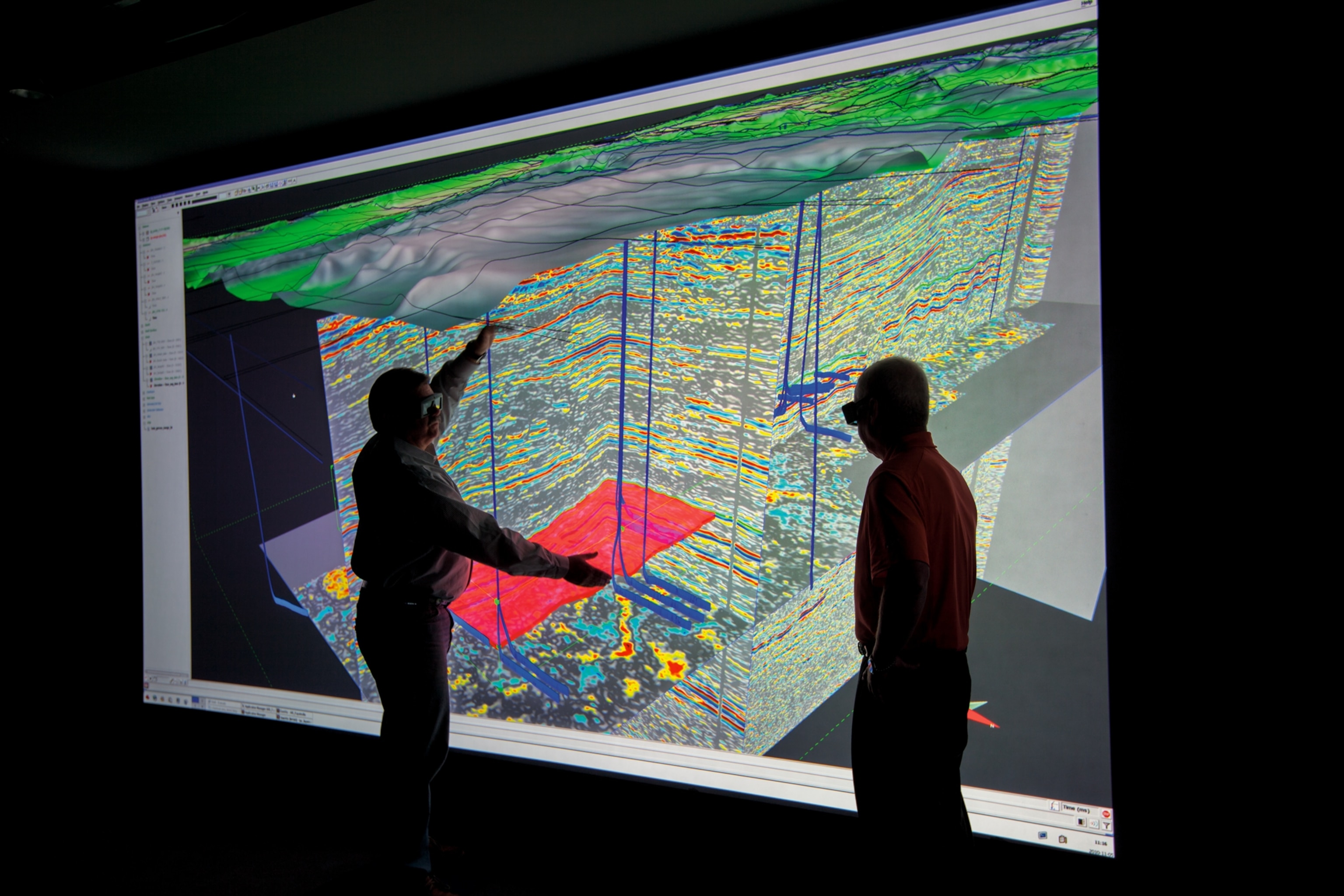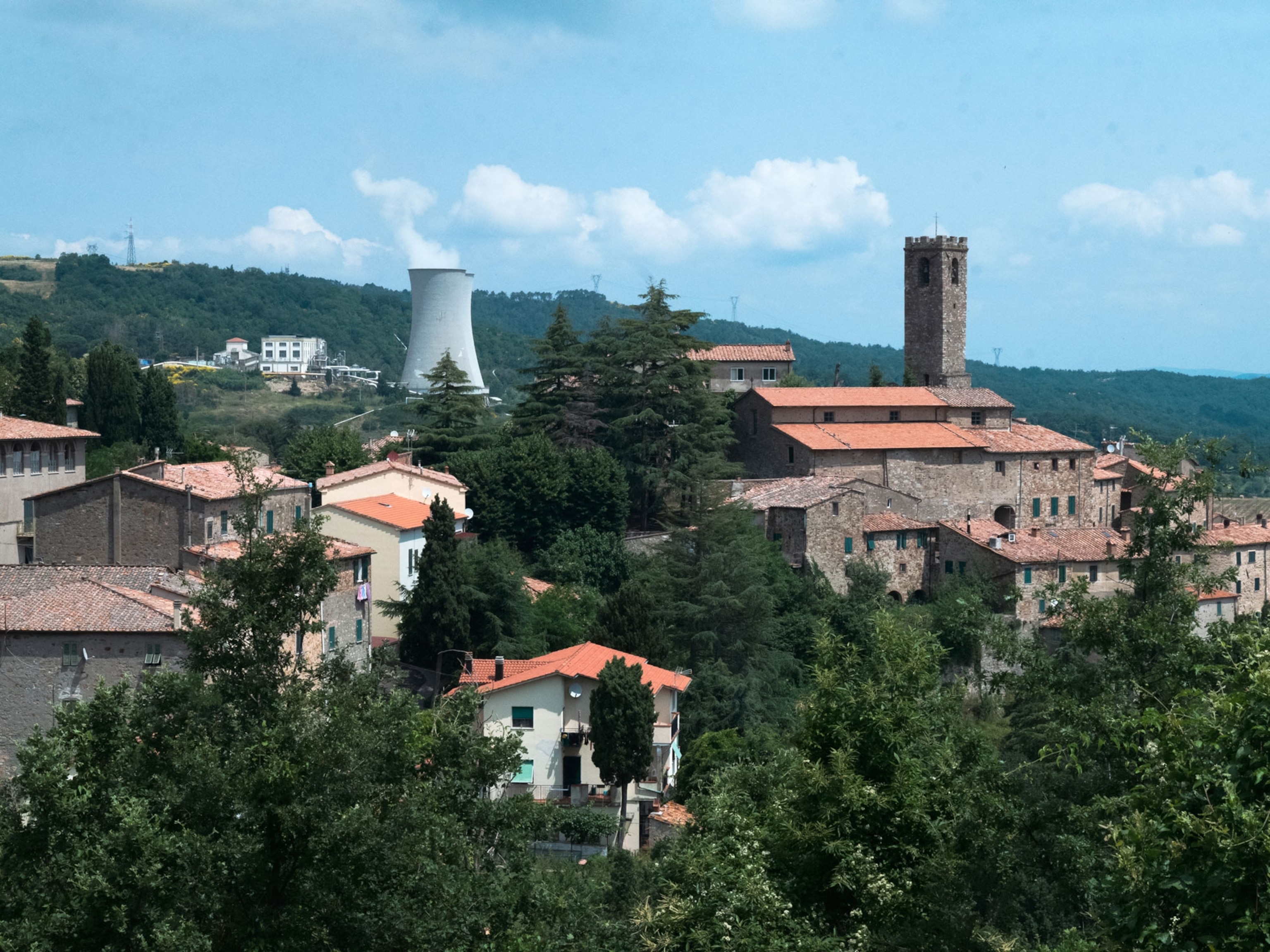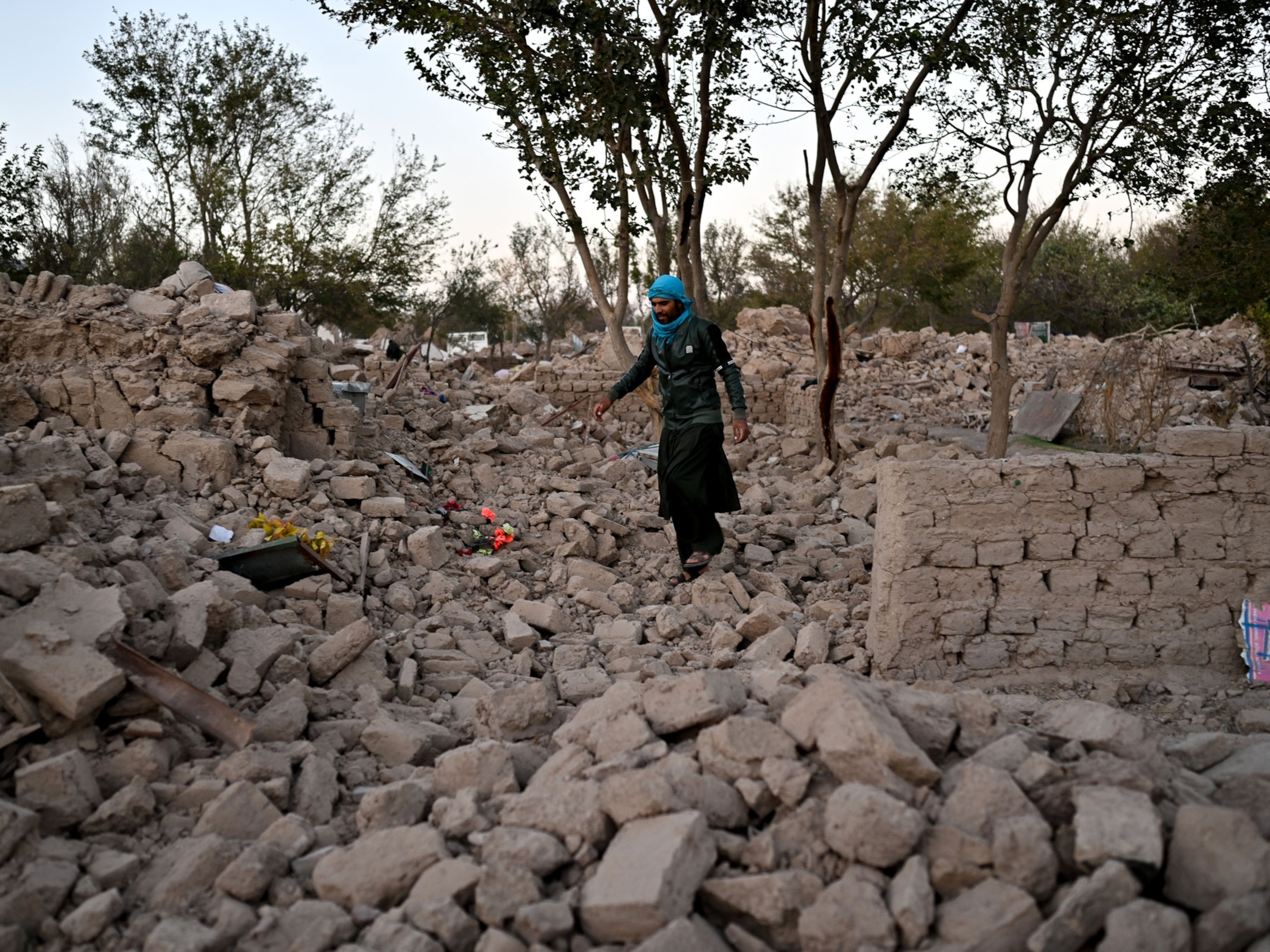Inside the Earth
The Earth's interior is composed of four layers, three solid and one liquid—not magma but molten metal, nearly as hot as the surface of the sun.
The deepest layer is a solid iron ball, about 1,500 miles (2,400 kilometers) in diameter. Although this inner core is white hot, the pressure is so high the iron cannot melt.
The iron isn't pure—scientists believe it contains sulfur and nickel, plus smaller amounts of other elements. Estimates of its temperature vary, but it is probably somewhere between 9,000 and 13,000 degrees Fahrenheit (5,000 and 7,000 degrees Celsius).
Above the inner core is the outer core, a shell of liquid iron. This layer is cooler but still very hot, perhaps 7,200 to 9,000 degrees Fahrenheit (4,000 to 5,000 degrees Celsius). It too is composed mostly of iron, plus substantial amounts of sulfur and nickel. It creates the Earth's magnetic field and is about 1,400 miles (2,300 kilometers) thick.
River of Rock
The next layer is the mantle. Many people think of this as lava, but it's actually rock. The rock is so hot, however, that it flows under pressure, like road tar. This creates very slow-moving currents as hot rock rises from the depths and cooler rock descends.
The mantle is about 1,800 miles (2,900 kilometers) thick and appears to be divided into two layers: the upper mantle and the lower mantle. The boundary between the two lies about 465 miles (750 kilometers) beneath the Earth's surface.
The crust is the outermost layer of the Earth. It is the familiar landscape on which we live: rocks, soil, and seabed. It ranges from about five miles (eight kilometers) thick beneath the oceans to an average of 25 miles (40 kilometers) thick beneath the continents.
Currents within the mantle have broken the crust into blocks, called plates, which slowly move around, colliding to build mountains or rifting apart to form new seafloor.
Continents are composed of relatively light blocks that float high on the mantle, like gigantic, slow-moving icebergs. Seafloor is made of a denser rock called basalt, which presses deeper into the mantle, producing basins that can fill with water.
Except in the crust, the interior of the Earth cannot be studied by drilling holes to take samples. Instead, scientists map the interior by watching how seismic waves from earthquakes are bent, reflected, sped up, or delayed by the various layers.
You May Also Like
Go Further
Animals
- Octopuses have a lot of secrets. Can you guess 8 of them?
- Animals
- Feature
Octopuses have a lot of secrets. Can you guess 8 of them? - This biologist and her rescue dog help protect bears in the AndesThis biologist and her rescue dog help protect bears in the Andes
- An octopus invited this writer into her tank—and her secret worldAn octopus invited this writer into her tank—and her secret world
- Peace-loving bonobos are more aggressive than we thoughtPeace-loving bonobos are more aggressive than we thought
Environment
- Listen to 30 years of climate change transformed into haunting musicListen to 30 years of climate change transformed into haunting music
- This ancient society tried to stop El Niño—with child sacrificeThis ancient society tried to stop El Niño—with child sacrifice
- U.S. plans to clean its drinking water. What does that mean?U.S. plans to clean its drinking water. What does that mean?
- Food systems: supporting the triangle of food security, Video Story
- Paid Content
Food systems: supporting the triangle of food security - Will we ever solve the mystery of the Mima mounds?Will we ever solve the mystery of the Mima mounds?
History & Culture
- Strange clues in a Maya temple reveal a fiery political dramaStrange clues in a Maya temple reveal a fiery political drama
- How technology is revealing secrets in these ancient scrollsHow technology is revealing secrets in these ancient scrolls
- Pilgrimages aren’t just spiritual anymore. They’re a workout.Pilgrimages aren’t just spiritual anymore. They’re a workout.
- This ancient society tried to stop El Niño—with child sacrificeThis ancient society tried to stop El Niño—with child sacrifice
- This ancient cure was just revived in a lab. Does it work?This ancient cure was just revived in a lab. Does it work?
Science
- The unexpected health benefits of Ozempic and MounjaroThe unexpected health benefits of Ozempic and Mounjaro
- Do you have an inner monologue? Here’s what it reveals about you.Do you have an inner monologue? Here’s what it reveals about you.
- Jupiter’s volcanic moon Io has been erupting for billions of yearsJupiter’s volcanic moon Io has been erupting for billions of years
- This 80-foot-long sea monster was the killer whale of its timeThis 80-foot-long sea monster was the killer whale of its time
Travel
- How to plan an epic summer trip to a national parkHow to plan an epic summer trip to a national park
- This town is the Alps' first European Capital of CultureThis town is the Alps' first European Capital of Culture
- This royal city lies in the shadow of Kuala LumpurThis royal city lies in the shadow of Kuala Lumpur
- This author tells the story of crypto-trading Mongolian nomadsThis author tells the story of crypto-trading Mongolian nomads





